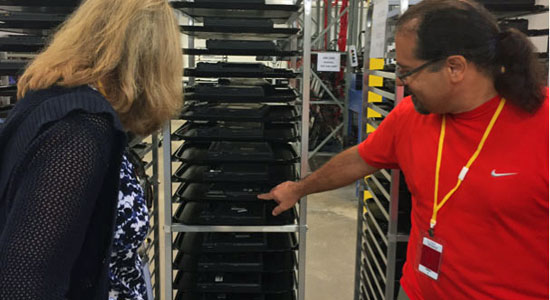There’s a reason I like designers: they tend to think big picture (pun intended). Dell’s Sr. VP of Experience Design, Ed Boyd, is a good example. In a recent piece he wrote for Triple Pundit, Ed talks about how smart up-front design strategies are critical to the end of life for our IT products. Rather than having a beautiful product or an environmentally friendly one, Ed says you should have both.
He takes his engineers to visit with recyclers, learning what frustrates them, what slows them down, and what simply doesn’t work. This is a regular field trip he takes his designers on, where they learn things like having laptop cases open from the bottom instead of the top to speed up dismantling, or incorporating icons, pictures and videos into repair manuals so technicians do not have to pause to read detailed instructions.

Ed also points to modularity as another key, sharing the example of creating a single access door for all major components. He also cites Dutch cell phone maker Fairphone and their plug-and-play design for the Fairphone 2. The company was featured in Dell’s Legacy of Good Short Film Contest this past year.
And it’s not just how you manipulate the product.
“[It] turns out ‘trash’ can be a workable and cost-effective material for designers,” explained Boyd.
He talks about how Adidas is making shoes out of ocean plastic and notes that he is exploring the waste material for packaging design at Dell.
All of these examples of big-picture thinking demonstrate how cutting-edge designers like Ed are making the environment a priority when they design. “We owe it to our customers, our communities and our planet to continue pushing the boundaries of what’s possible with design.”
Boyd’s article can be found at Triple Pundit. Read more about Dell’s innovative approaches to design and materials sourcing, at www.dell.com/circulareconomy.